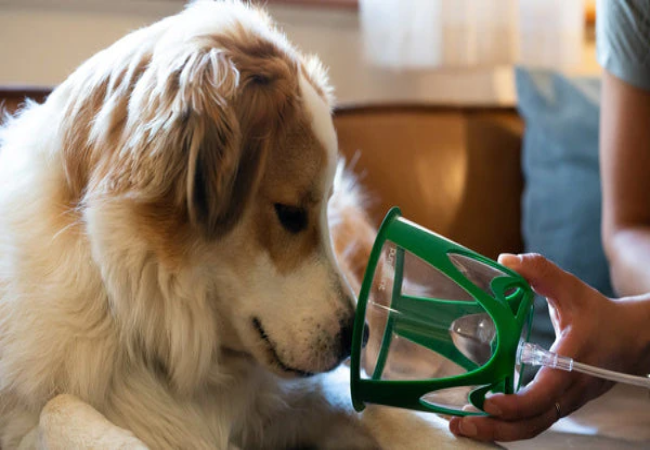Vet Approved Guide: Acute Respiratory Distress Syndrome (ARDS) in Dogs – Recognize & Treat in 2025 🚨🐶

In this article
Vet Approved Guide: Acute Respiratory Distress Syndrome (ARDS) in Dogs – Recognize & Treat in 2025 🚨🐶
By Dr. Duncan Houston BVSc
Acute respiratory distress syndrome (ARDS), also known as “shock lung,” is a sudden and life-threatening inflammatory condition that causes rapid fluid buildup in your dog’s lungs. Prompt recognition and emergency veterinary care are critical to survival. 🛡️
🔍 What Is ARDS?
ARDS occurs when an initial injury—whether from lung disease or systemic trauma—triggers widespread inflammation, increasing blood vessel leakage into the alveoli (air sacs). This leads to impaired oxygen exchange and lung collapse.
🚨 Common Causes
- Pneumonia or severe lung infections
- Sepsis, shock, or systemic inflammatory response (SIRS)
- Chest trauma, including blunt force or burns
- Aspiration of vomitus, gases, or toxins
- Near-drowning or smoke inhalation
⚠️ Signs to Watch For
- Severe breathing difficulty—rapid, shallow breaths
- Coughing, often with crackling lung sounds
- Blue or gray gums/tongue (cyanosis), cough, lethargy
- Fever, nasal discharge, restlessness or collapse
🩺 How ARDS Is Diagnosed
- History of the triggering event within 72 hours
- Physical exam—listening for crackles, signs of hypoxia
- Chest X-rays or ultrasound showing fluid in the lungs
- Blood gas analysis revealing low oxygen levels (hypoxemia)
- Lab tests to rule out heart failure and identify the cause
⛑️ Emergency Treatment Steps
- Immediate oxygen therapy; ventilator support if needed
- IV fluids, nutrition, and stabilization
- Treat root cause—antibiotics for infection, supportive care for trauma or sepsis
- Manage inflammation, anxiety, and pain
- Frequent monitoring of respiratory status, blood gases, and vitals
🩻 Prognosis & Recovery
Sadly, ARDS carries a high mortality rate in dogs—up to ~90%—even with aggressive ICU-level care. When survival is possible, long-term lung damage may lead to chronic breathing issues.
🏠 Aftercare & Ongoing Monitoring
- Strict rest and confinement during recovery
- Gradual oxygen-weaning and monitoring oxygen saturation
- Treat any chronic lung or systemic conditions
- Follow-up imaging to assess lung healing and detect complications
📱 Tools to Support Your Dog’s Care
- Ask A Vet: 24/7 emergency advice and recovery guidance. 🩺
🧭 Final Thoughts
ARDS is a rare but devastating respiratory emergency. Immediate recognition, advanced supportive care, and aggressive treatment of underlying causes offer the best—but still precarious—chance for survival. If your dog shows sudden respiratory distress, get them to an emergency vet IMMEDIATELY. 🐾
For fast help and expert guidance, download the Ask A Vet app today. 📲🐶






